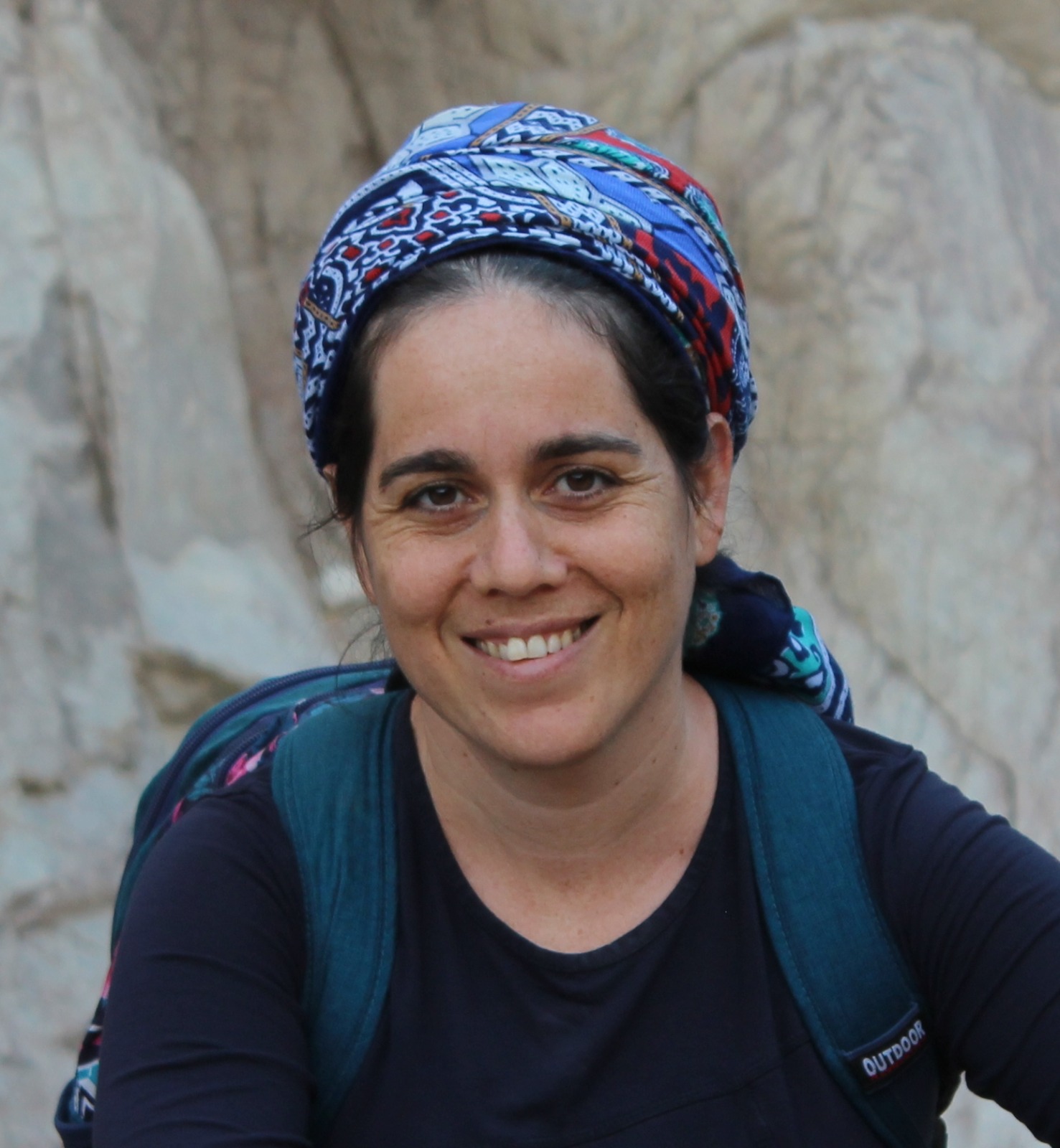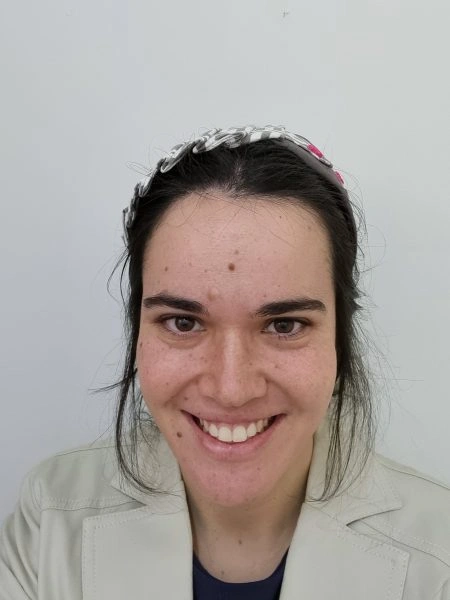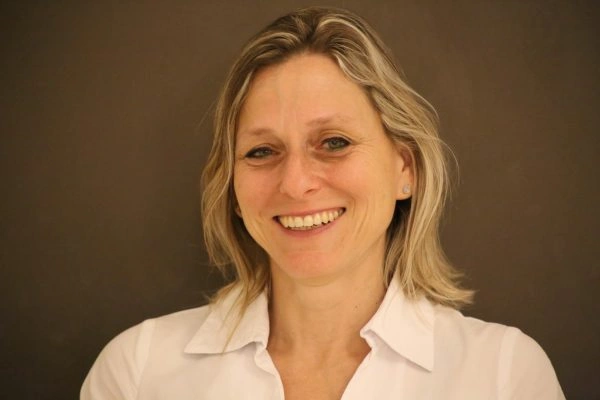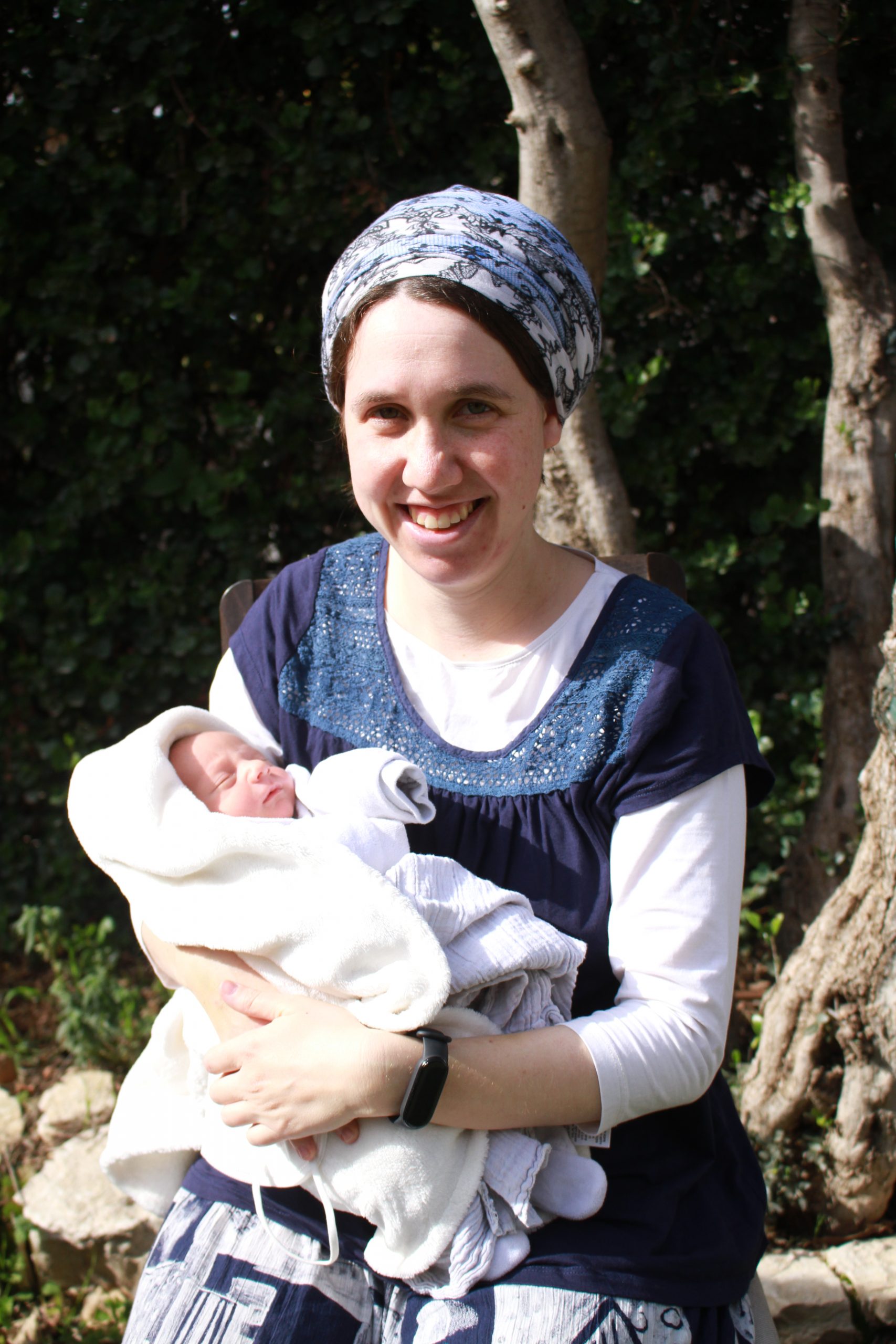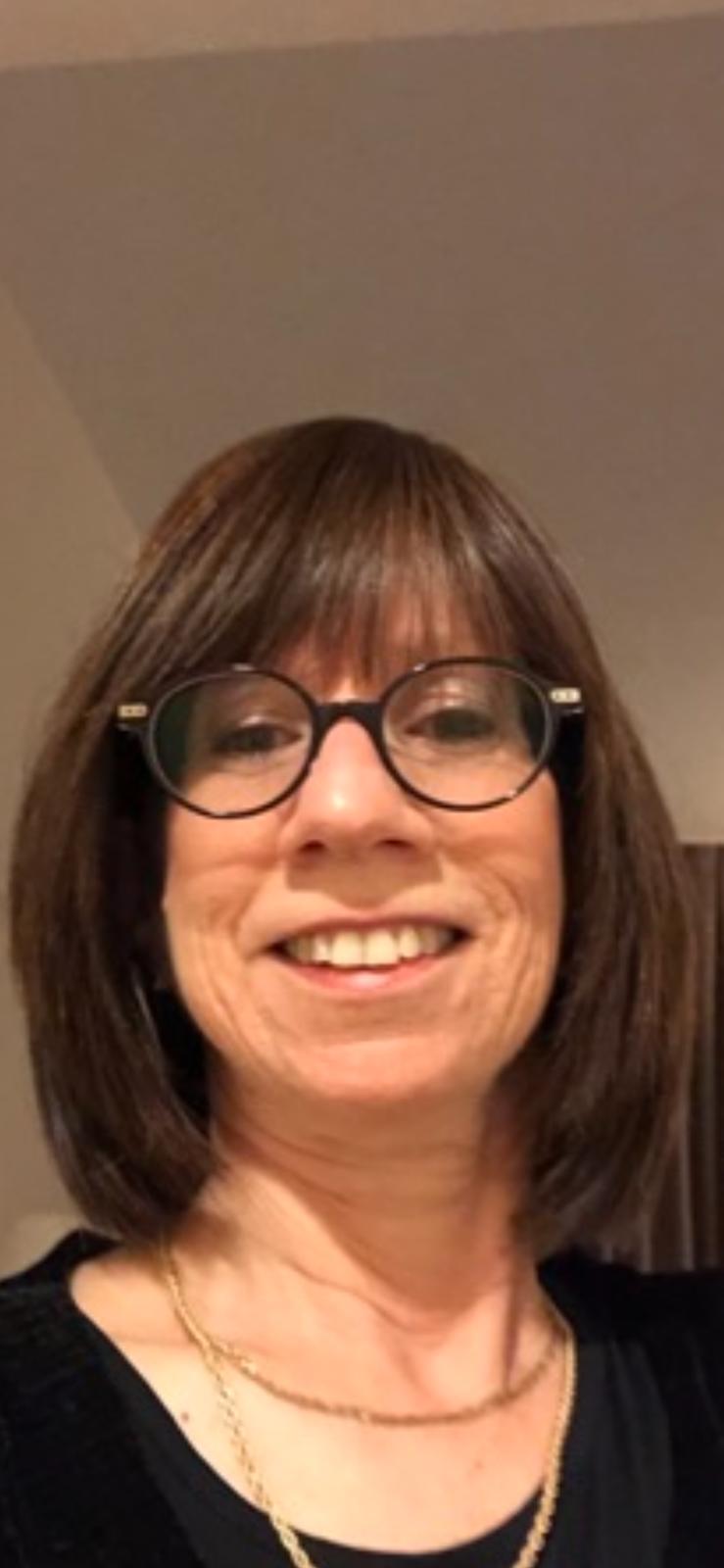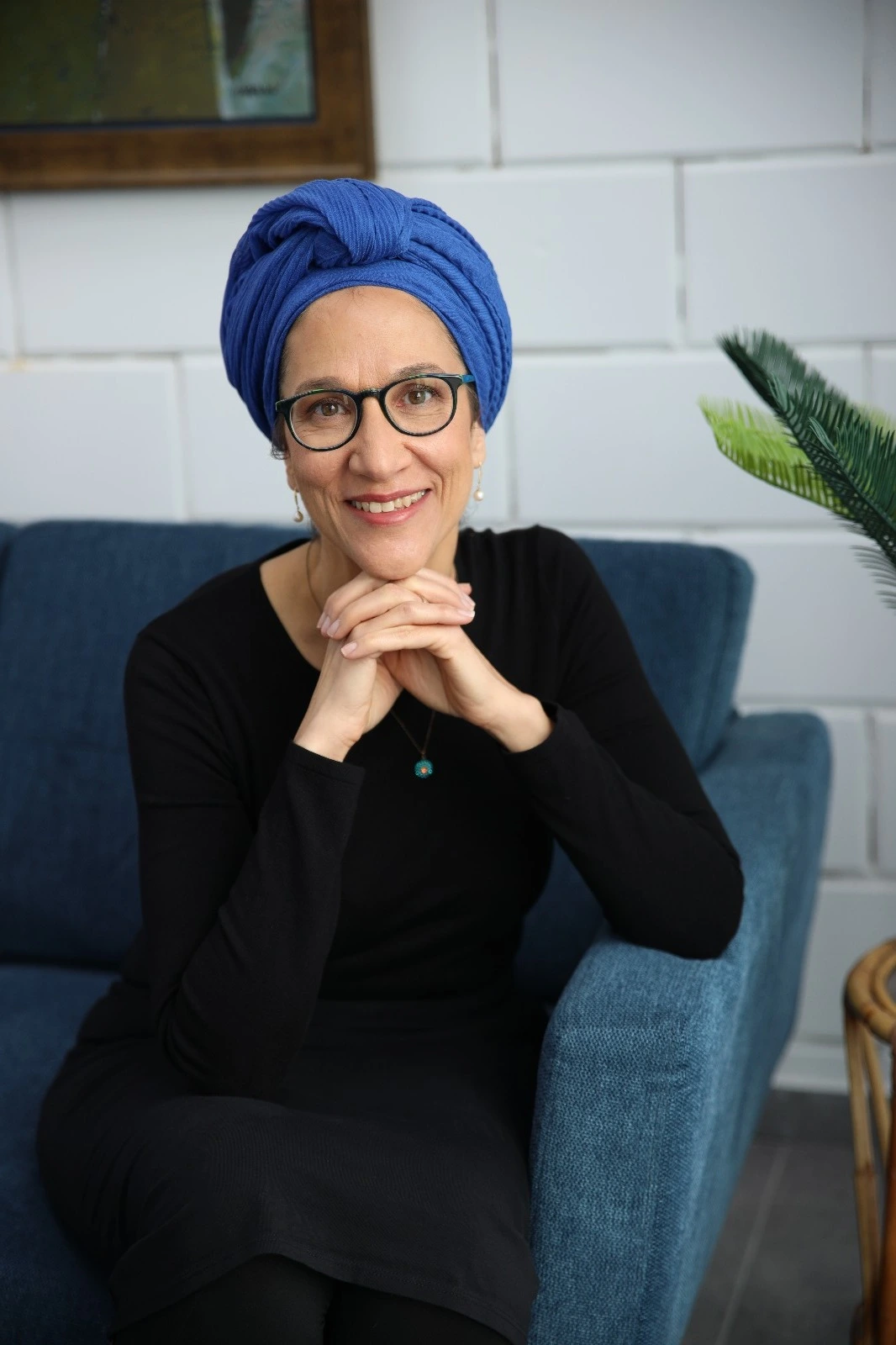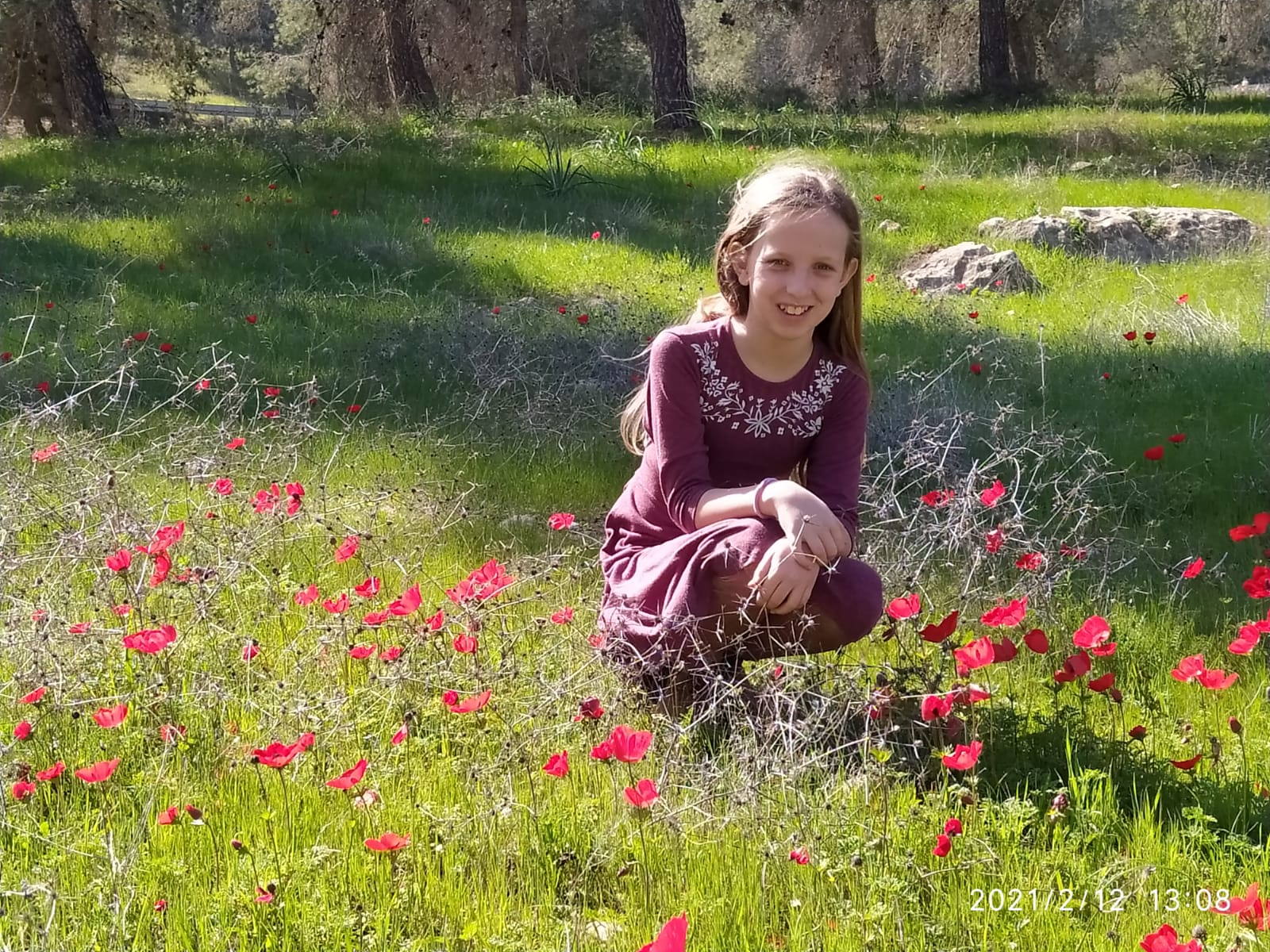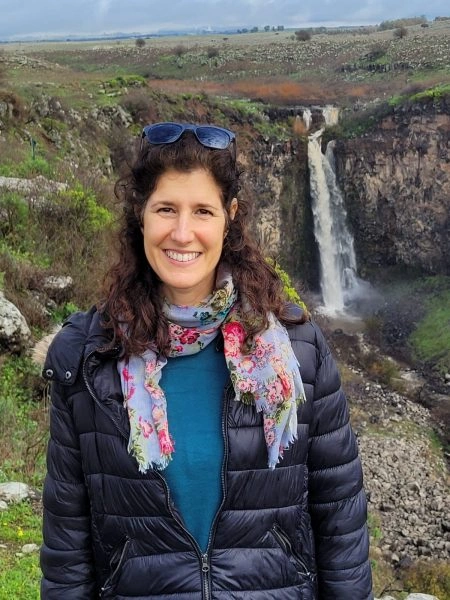חוזרים לדיני טריפות – מהן סימני טריפה ברגל של הבהמה – נחתך, או נבשר עצם? לאיזה ארכובה מתייחסת המשנה – העלויונה או תחתונה? אם נחתך בצומת הגידים זה טריפה – איפה בדיוק זה צומת הגידים?
רוצים להקדיש למידה? התחל כאן:
העמקה
רוצה להבין מה באמת קורה מתחת לפני השטח של הסוגיה?
שיעורים, פודקאסטים והרחבות של מיטב המורות שלנו יפתחו לך עוד זוויות וכיווני חשיבה.
חדשה בלימוד הגמרא?
זה הדף הראשון שלך? איזו התרגשות עצומה! יש לנו בדיוק את התכנים והכלים שיעזרו לך לעשות את הצעדים הראשונים ללמידה בקצב וברמה שלך, כך תוכלי להרגיש בנוח גם בתוך הסוגיות המורכבות ומאתגרות.
פסיפס הלומדות שלנו
גלי את קהילת הלומדות שלנו, מגוון נשים, רקעים וסיפורים. כולן חלק מתנועה ומסע מרגש ועוצמתי.
חולין עו
מתני׳ בהמה שנחתכו רגליה מן הארכובה ולמטה כשרה מן הארכובה ולמעלה פסולה וכן שניטל צומת הגידין
MISHNA: With regard to an animal whose hind legs were severed, if they were severed from the leg joint and below, the animal is kosher; from the leg joint and above, the animal is thereby rendered a tereifa and is not kosher. And likewise, an animal whose convergence of sinews in the thigh was removed is a tereifa and is not kosher.
נשבר העצם אם רוב הבשר קיים שחיטתו מטהרתו ואם לאו אין שחיטתו מטהרתו:
If the bone of a limb was broken but the limb was not completely severed, and the animal was then slaughtered, if the majority of the flesh surrounding the bone is intact, the slaughter of the animal renders it permitted; but if not, its slaughter does not render it permitted.
גמ׳ אמר רב יהודה אמר רב אמר רבי חייא למטה למטה מן הארכובה למעלה למעלה מן הארכובה באיזו ארכובה אמרו בארכובה הנמכרת עם הראש
GEMARA: Rav Yehuda says that Rav says that Rabbi Ḥiyya says: When the mishna makes reference to the leg being severed from the leg joint and below, it means that the cut was below the leg joint, and when it says that if it was severed from the leg joint and above it is a tereifa, it means that the cut was above the leg joint. And with regard to which leg joint did they say this? With regard to the leg joint that is sold together with the head of the animal. This is the lower leg joint that connects the lower bone, or metatarsus, and middle bone, or tibia. Accordingly, the animal is a tereifa only if the leg was severed in the middle bone or upper bone.
עולא אמר רבי אושעיא כנגדו בגמל ניכר
Ulla says that Rabbi Oshaya says: The mishna is referring to the leg joint that in most animals cannot be seen from the outside, but the corresponding joint in the leg of a camel is prominent and conspicuous. This is referring to the joint between the upper bone, or femur, and middle bone, or tibia. Accordingly, the animal is a tereifa only if it was severed in the upper bone.
אמר ליה עולא לרב יהודה בשלמא לדידי דאמינא כנגדו בגמל ניכר היינו דקתני וכן שניטל צומת הגידין אלא לדידך מאי וכן שניטל צומת הגידין
Ulla said to Rav Yehuda: Granted, according to my opinion, as I say it means the joint whose corresponding joint in the leg of a camel is conspicuous, i.e., the upper joint, this explanation is consistent with that which the mishna teaches: And likewise, an animal whose convergence of sinews in the thigh was removed is not kosher. The convergence of sinews lies on the lower part of the middle bone. Since I hold that if the middle bone is severed, this does not render the animal a tereifa, it is necessary for the mishna to teach that nevertheless, if that bone was severed at the point of the convergence of sinews, this would render it a tereifa. But according to your opinion that the mishna is referring to the lower joint, and if the middle bone is severed, this renders the animal a tereifa, what is the purpose of teaching: And likewise, an animal whose convergence of sinews in the thigh was removed is not kosher?
אמר ליה רכובה בלא צומת הגידים וצומת הגידים בלא רכובה והא נחתכו קתני אישתיק
Rav Yehuda said to Ulla: According to my opinion, the mishna is referring to two cases: The first is where the leg was severed above the lower leg joint, in the middle bone, without the removal of the convergence of sinews in the thigh, and the second is where the convergence of sinews in the thigh was removed without the leg above the leg joint being severed. Ulla then asked Rav Yehuda: But the mishna teaches: Were severed, indicating that the leg was entirely severed, which perforce includes the convergence of sinews. Rav Yehuda was silent, as he did not have a resolution.
לבתר דנפק אמר מ”ט לא אמרי ליה למטה למטה מן הארכובה למעלה למעלה מצומת הגידין
After Ulla left, Rav Yehuda said to himself: What is the reason that I did not say to him the following resolution: When the mishna states that if the leg was severed below the leg joint the animal is kosher, it means below the lower leg joint, and when it says that if it was severed above it is a tereifa, it means in the middle bone above the convergence of sinews in the thigh. Accordingly, it would still be necessary to teach that if the convergence of sinews in the thigh was removed, this would render it a tereifa.
הדר אמר ולא אמרי ליה ואמר לי נחתכו קתני הכא נמי מן הארכובה ולמעלה קתני
Rav Yehuda then said to himself: It is good that I did not suggest this resolution, as did I not initially say a resolution to him, and he said to me that it was refuted by the fact that the mishna teaches: Were severed, which clearly indicates that it was severed completely? Here too, he could have said: You cannot explain the mishna as referring only to severing the leg above the convergence of sinews, as the mishna teaches: From the lower leg joint and above, which clearly includes the entire middle bone, including the area of the convergence of sinews.
רב פפא מתני הכי אמר רב יהודה אמר רב אמר רבי חייא למטה למטה מן הארכובה ומצומת הגידין למעלה למעלה מן הארכובה ומצומת הגידין וכן שניטל צומת הגידין וארכובה גופה כדעולא א”ר אושעיא
Rav Pappa teaches the previous discussion like this: Rav Yehuda says that Rav says that Rabbi Ḥiyya says: When the mishna refers to severing the leg below, it means severing below both the leg joint and the convergence of sinews in the thigh, i.e., the lower bone was severed, and when it refers to severing the leg above, it means severing above both the leg joint and the convergence of sinews in the thigh, i.e., the upper bone was severed. And then the mishna adds that with regard to the middle bone, it is only a tereifa when the convergence of sinews was removed. And this explanation assumes that the leg joint itself is referring to the upper leg joint, in accordance with that which Ulla said that Rabbi Oshaya said, i.e., that it means the joint whose corresponding joint in the leg of a camel is conspicuous.
ומי איכא מידי דאילו מדלי פסיק ליה וחיה מתתי פסיק ליה ומתה
The Gemara questions Rav Pappa’s explanation of the opinions of Ulla and Rav Yehuda: But is there any possibility that if one went higher up the leg and severed the middle bone above the convergence of sinews, it would live, i.e., the animal would not be a tereifa, but if one went down the leg and severed it on the convergence of sinews, it would be a tereifa and would die within twelve months? It is illogical that severing more of the leg is less life-threatening for the animal.
אמר רב אשי טרפות קא מדמית להדדי אין אומרין בטרפות זו דומה לזו שהרי חותכה מכאן ומתה חותכה מכאן וחיה
Rav Ashi said: Are you comparing different types of tereifot to one another? One cannot say with regard to tereifot that this is similar to that, as different areas of an animal’s body react differently: One cuts it from here, at a low point on the animal’s body, and it could die; and one cuts it from there, at a higher point, and it could live.
ואלו הן צומת הגידין רבה אמר רב אשי דאגרמא ולבר רבה בר רב הונא אמר רב אשי דאגרמא ולגיו רבא בריה דרבה בר רב הונא אמר רב אסי דעילוי ערקומא
§ The Gemara asks: And which parts are included in the convergence of sinews in the thigh, such that if they are removed it renders the animal a tereifa? The sinews at the bottom of the bone cleave to it, as there is no flesh on that part of the bone. A short distance above that they separate from the bone and then they diverge from each other as they enter the flesh. Rabba says that Rav Ashi says: Those which are off the bone, before they diverge. Rabba bar Rav Huna says that Rav Ashi says: Those which are adjacent to the bone. Rava, son of Rabba bar Rav Huna, says that Rav Asi says: The convergence of sinews begins even lower and includes those which are above the arkum bone, a small bone that lies between the lower bone and the middle bone of the leg.
יתיב ההוא מרבנן קמיה דר’ אבא ויתיב וקאמר דערקומא גופה אמר ליה רבי אבא לא תציתו ליה הכי אמר רב יהודה היכא דפרעי טבחי והיינו רבא בריה דרבה בר רב הונא אמר רב אסי
The Gemara relates: One of the Sages sat before Rabbi Abba, and he sat and said: The convergence of sinews includes the sinews of the arkum bone itself. Rabbi Abba said to his students: Do not listen to that Sage, as his ruling is too stringent. This is what Rav Yehuda said: It is in the place where butchers split open the animal’s leg. The Gemara comments: And this is the same as that which Rava, son of Rabba bar Rav Huna, says that Rav Asi says, i.e., that it includes the sinews above the arkum.
אמר רב יהודה אמר שמואל צומת הגידים שאמרו מקום שהגידין צומתין ועד כמה א”ל ההוא מדרבנן ורב יעקב שמיה כי הוינן בי רב יהודה אמר לן שמעו מני מלתא דמגברא רבה שמיע לי ומנו שמואל צומת הגידין שאמרו מקום שהגידין צומתין בו וממקום שצומתין עד מקום שמתפשטין
Rav Yehuda says that Shmuel says: The convergence of sinews in the thigh that they spoke of in the mishna is the place where the sinews converge and appear as though they are a single entity. The Gemara asks: And until how far does it extend? One of the Sages, and his name is Rav Ya’akov, said to them: When we were studying in the school of Rav Yehuda, he said to us: Hear from me a matter that I heard from a great man, and who is he? Shmuel. The convergence of sinews that they spoke of is the place where the sinews converge, and it extends from the place where they converge until the place where they diverge and are subsumed within the flesh.
וכמה אמר אביי ארבעה בטדי בתורא בדקה מאי אמר אביי בליטי הוו צומת הגידים בליעי לא הוו צומת הגידים
The Gemara asks: And how far is this? Abaye said: Four handbreadths in an ox. The Gemara asks: What is the measure in a small domesticated animal? Abaye said: There is no set measure; rather, as long as the sinews are prominent and are not subsumed within the flesh, they are part of the convergence of sinews in the thigh, but once they are subsumed they are not considered part of the convergence of sinews in the thigh.
אשוני הוו צומת הגידים רכיכי לא הוו צומת הגידים אלימי הוו צומת הגידים קטיני לא הוו צומת הגידים חוורי הוו צומת הגידים לא חוורי לא הוו צומת הגידים
Abaye adds: The sinews that are hard are part of the convergence of sinews in the thigh; those that are soft are not part of the convergence of sinews. Those that are thick are part of the convergence of sinews; those that are thin are not part of the convergence of sinews. Those that are white are part of the convergence of sinews; those that are not white are not part of the convergence of sinews.
מר בר רב אשי אמר כיון דזיגי אע”ג דלא חוורי
Mar bar Rav Ashi said: Once the sinews begin to be translucent, even if they are not actually white, they are considered part of the convergence of sinews.
אמר אמימר משמיה דרב זביד תלתא חוטי הוו חד אלימא ותרי קטיני איפסיק אלימא אזדא רוב בנין איפסיק קטיני אזדא רוב מנין מר בר רב אשי מתני לקולא איפסיק אלימא האיכא רוב מנין איפסיק קטיני האיכא רוב בנין
§ With regard to the removal of the convergence of sinews in the thigh, which renders the animal a tereifa, Ameimar says in the name of Rav Zevid: There are three strands, i.e., sinews; one is thick and the other two are thin. If the thick sinew was severed, a majority of the structure of the convergence of sinews is gone, as the thick sinew is thicker than the other two combined. If the thin ones were severed, then a majority of the number of sinews is gone. If either type of majority has been severed, the animal is rendered a tereifa. Conversely, Mar bar Rav Ashi teaches a lenient version of this ruling: If the thick sinew was severed, since there is a majority of the number of sinews that remains, the animal is not a tereifa. Likewise, if the thin ones were severed, since there is a majority of the structure that remains intact, the animal is not a tereifa.
בעופות שיתסר חוטי הוו אי פסיק חד מינייהו טרפה אמר מר בר רב אשי הוה קאימנא קמיה דאבא ואייתו לקמיה עופא ובדק ואשכח ביה חמיסר הוה חד דהוה שני מחבריה נפציה ואשכח תרי
The Gemara comments: All this applies to animals, whereas with regard to birds, there are sixteen strands; if even one of them is severed, it is a tereifa. Mar bar Rav Ashi said: I was standing before father, i.e., Rav Ashi, and they brought before him a bird, and he examined it to see if it was a tereifa and found fifteen sinews. There was one of them that was different from the others; he broke it apart and it was found to be composed of two sinews.
אמר רב יהודה אמר רב צומת הגידין שאמרו ברובו מאי רובו רוב אחד מהן כי אמריתה קמיה דשמואל אמר לי מכדי תלתא הוו כי מיפסיק חד מינייהו לגמרי הא איכא תרי
The Gemara returns to the issue of the convergence of sinews in an animal. Rav Yehuda says that Rav says: The convergence of sinews in the thigh of which the Sages spoke, stating that if it is severed the animal is a tereifa, is referring to the severing of the majority of it. Rav Yehuda added: What is the meaning of the majority of it? This means the majority of one of the sinews. Rav Yehuda further stated: When I stated this halakha in the name of Rav before Shmuel, he said to me: Since they are three sinews, when one of them is severed entirely, there are still two remaining, which means that the majority of the convergence of sinews is intact. Therefore, the animal is still kosher.
טעמא דאיכא תרי הא ליכא תרי לא ופליגא דרבנאי דאמר רבנאי אמר שמואל צומת הגידים אפי’ לא נשתייר בה אלא כחוט הסרבל כשרה
The Gemara infers from Shmuel’s statement: The reason the animal is not a tereifa is only that there are two remaining, from which it may be inferred that if there are not two remaining it is not kosher, despite the fact that the other sinew is intact. The Gemara notes: And according to this version of his opinion, Shmuel disagrees with the opinion of Rabbenai, who also stated his ruling in Shmuel’s name. As Rabbenai says that Shmuel says: With regard to the convergence of sinews in the thigh, even if only one sinew remains of it, which is as thick as the string used to close the neckline of a cloak [hasarbal], the animal is kosher.
ואיכא דאמרי מאי רובו רוב כל אחד ואחד כי אמריתה קמיה דשמואל אמר לי מכדי תלתא הוו האיכא תלתא דכל חד וחד מסייע ליה לרבנאי דאמר רבנאי אמר שמואל צומת הגידין שאמרו אפי’ לא נשתייר בה אלא כחוט הסרבל כשרה:
And some say that there is a different version of this discussion. Rav Yehuda said: What is the meaning of a majority of it? This means a majority of each and every one of the sinews. Rav Yehuda added: When I stated this halakha in the name of Rav before Shmuel, he said to me: Since they are three sinews, there is one-third of each and every one, and that should be sufficient. There is no need for a majority of each sinew to remain. The Gemara notes: Rav Yehuda’s statement in the name of Shmuel supports the opinion of Rabbenai, as Rabbenai says that Shmuel says: With regard to the convergence of sinews in the thigh of which the Sages spoke, even if there remains of each of the three sinews only as much as the thickness of the string used to close the neckline of a cloak, the animal is kosher. This also indicates that there is no need for a majority of the sinew to remain.
נשבר העצם כו’:
§ The mishna states: If the bone of a limb was broken but the limb was not completely severed, and the animal was then slaughtered, if the majority of the flesh surrounding the bone is intact, the slaughter of the animal renders it permitted; but if not, its slaughter does not render it permitted.
אמר רב למעלה מן הארכובה אם רוב הבשר קיים זה וזה מותר ואם לאו זה וזה אסור למטה מן הארכובה אם רוב הבשר קיים זה וזה מותר אם לאו אבר אסור ובהמה מותרת
Rav says: If the bone was broken above the leg joint and then the animal was slaughtered, if a majority of the flesh around the break is intact, both this, the animal itself, and that, the limb, are permitted. The break does not render the animal a tereifa and the limb is not regarded as a hanging limb; therefore it is permitted by the slaughter of the animal. But if not, i.e., if a majority of the flesh around the break is not intact, both this and that, the animal and the limb, are prohibited. If the bone was broken below the leg joint, then if a majority of the flesh is intact, both this and that are permitted; if not, then the limb itself is prohibited from the area of the break and below, as it is not permitted by the slaughter of the animal, but the rest of the animal is permitted.
ושמואל אמר בין למעלה בין למטה אם רוב הבשר קיים זה וזה מותר אם לאו אבר אסור ובהמה מותרת
And Shmuel says: Whether the break is above or below the leg joint, the halakha is the same: If a majority of the flesh is intact, both this and that, the limb and the animal, are permitted. If the majority of the flesh is not intact, the limb is prohibited and the animal is permitted. Even if the leg was broken above the leg joint the animal does not become a tereifa unless the leg was entirely severed.
מתקיף לה רב נחמן לשמואל יאמרו אבר ממנה מוטל באשפה ומותרת א”ל רב אחא בר רב הונא לרב נחמן לרב נמי יאמרו אבר ממנה מוטל באשפה ומותרת
Rav Naḥman objects to this ruling of Shmuel: If one permits the animal despite the fact that its leg is prohibited, people will say: A limb from the animal is placed in the garbage, as it is prohibited, and yet the animal itself is permitted? They may then mistakenly conclude that even if that leg had been completely severed from the animal, the animal would be permitted. Rav Aḥa bar Rav Huna said to Rav Naḥman: This concern also exists according to the opinion of Rav, in a case where the bone is broken below the joint and the flesh is not intact. Rav rules in that case that the animal is permitted and the limb is prohibited. But is there not the concern that people will say: A limb from this animal is placed in the garbage, and the animal itself is permitted?
א”ל הכי קאמינא אבר שחיה ממנה מוטל באשפה ומותרת
Rav Naḥman said to him: This is what I meant to say: People will say: A limb from which this animal lives, i.e., which if removed, renders the animal a tereifa, is placed in the garbage, and the animal itself is permitted? The concern exists only according to the opinion of Shmuel, who permits the animal even when the break is above the joint, as were it severed there, the animal would thereby be rendered a tereifa. People may mistakenly equate the case where the bone was broken and the case where it was severed and permit both. The concern does not exist according to the opinion of Rav, as he permits the animal only in a case where the bone is broken below the joint, and even if it were severed there that would not render it a tereifa.
שלחו מתם הלכתא כוותיה דרב הדור שלחו כוותיה דשמואל הדור שלחו כוותיה דרב ואבר עצמו מטמא במשא
§ With regard to this dispute, they sent a ruling from there, Eretz Yisrael: The halakha is in accordance with the opinion of Rav that if the bone was broken above the leg joint, if a majority of the flesh around the break is not intact, both the animal and the limb are prohibited. They then sent a ruling: The halakha is in accordance with the opinion of Shmuel that only the limb is prohibited. They then a ruling: The halakha is in accordance with the opinion of Rav that the animal is a tereifa, and they added that the limb itself is not rendered pure by the slaughter; rather, it imparts the impurity of a limb from a living animal by carrying. The animal itself, though, is rendered pure from the impurity of a carcass and is prohibited only as a tereifa.
מתיב רב חסדא לא אם טיהרה שחיטת טרפה אותה ואת האבר המדולדל בה דבר שגופה תטהר את העובר דבר שאינו גופה
Rav Ḥisda raises an objection from a baraita cited earlier (73a) concerning whether the slaughter of a mother animal can render pure a limb of its fetus that was extended outside the womb even though the act of slaughter cannot render the fetus permitted for consumption. The Rabbis brought proof for their opinion that this limb is rendered pure from the halakha that a tereifa is rendered pure by slaughter even though it is not thereby permitted for consumption. Rabbi Meir responded: No, even if the slaughter of a tereifa renders the animal itself pure, and likewise, the slaughter of any animal renders pure the limb that was partially cut from it but still hangs from it from imparting the impurity of a carcass, despite the fact that this animal or limb is prohibited for consumption, that is so with regard to something that is part of its own body. Does it necessarily follow that it should also render pure the limb of its fetus, which is something that is not part of its own body? It is explicit in Rabbi Meir’s claim that the hanging limb of a tereifa is rendered pure by the slaughter of the animal.
א”ל רבה הדורי אפירכי למה לך אותיב ממתני’ נשחטה בהמה הוכשרו בדמיה דברי ר”מ ר”ש אומר לא הוכשרו
Rabba said to Rav Ḥisda: Why are you searching after refutations from baraitot that are not known by all? You can raise a conclusive refutation from the mishna (127b): With regard to the limb or flesh of an animal that was partially severed but remains hanging from it, if the animal was slaughtered, the limb and the flesh were thereby rendered susceptible to contracting the impurity of food by the blood of the animal, as blood is one of the seven liquids that render foods susceptible to impurity; this is the statement of Rabbi Meir. Rabbi Shimon says: They were not rendered susceptible with the blood of the slaughtered animal. It is evident that according to all opinions in the mishna, the hanging limb and flesh are not regarded as a limb or flesh from a living animal, which would not need to be rendered susceptible to impurity, as they impart their own impurity.
א”ל מתני’ איכא לדחויי כדדחינן
Rav Ḥisda said to Rabba: The difficulty from the mishna can be refuted, as we refuted it earlier (73a), by claiming that the dispute about the blood rendering the animal susceptible to impurity concerns only the hanging flesh, but that a hanging limb from an animal that was slaughtered does have the status of a limb from a living animal and the associated impurity.
כי סליק ר’ זירא אשכחיה לרב ירמיה דיתיב וקאמר לה להא שמעתא א”ל יישר וכן תרגמה אריוך בבבל אריוך מנו שמואל והא מיפלג פליג הדר ביה שמואל לגביה דרב
The Gemara relates that when Rabbi Zeira ascended to Eretz Yisrael he found Rav Yirmeya sitting and saying this halakha of Rav, i.e., that if the bone is broken above the leg joint and the flesh is not intact, the animal is a tereifa. Rabbi Zeira said to him: You have spoken well, and Aryokh interpreted the matter likewise in Babylonia. The Gemara asks: Who is Aryokh? It is Shmuel. But that is difficult, as Shmuel disagrees with Rav concerning this issue. The Gemara explains: Shmuel retracted his opinion in favor of that of Rav.
ת”ר נשבר העצם ויצא לחוץ אם עור ובשר חופין את רובו מותר אם לאו אסור וכמה רובו כי אתא רב דימי אמר ר’ יוחנן רוב עוביו ואמרי לה רוב הקיפו אמר רב פפא הלכך בעינן רוב עוביו ובעינן רוב הקיפו
§ The Sages taught in a baraita: In a case where the bone broke and protruded outward, if skin and flesh cover a majority of the bone the animal is permitted; if not, it is prohibited. The Gemara asks: And how much is a majority of a bone? When Rav Dimi came from Eretz Yisrael to Babylonia, he said that Rabbi Yoḥanan says: A majority of its width, and some say that he said: A majority of its circumference. Rav Pappa said: Therefore, as there is no clear ruling on the matter, we require that the bone be covered by a majority of its width, and we also require that it be covered by a majority of its circumference.
אמר עולא אמר רבי יוחנן עור הרי הוא כבשר א”ל רב נחמן לעולא ולימא מר עור מצטרף לבשר דהא עור ובשר קתני א”ל אנן עור או בשר תנינן
Ulla said that Rabbi Yoḥanan said: Skin is like flesh with regard to this issue, i.e., if the flesh has been removed but the skin covers a majority of the bone, the animal is kosher. Rav Naḥman said to Ulla: And let the Master say that skin combines with flesh, i.e., that if flesh and skin together cover a majority of the bone the animal is kosher, as the tanna of the above baraita teaches: Skin and flesh, which indicates that skin alone is ineffective. Ulla said to him: We learned that the baraita states: Skin or flesh.
איכא דאמרי [אמר עולא] א”ר יוחנן עור מצטרף לבשר א”ל רב נחמן לעולא ולימא מר עור משלים לבשר לחומרא
Some say that there is a different version of this discussion: Ulla said that Rabbi Yoḥanan said: Skin combines with flesh. Rav Naḥman said to Ulla: And let the Master say that skin completes the amount of flesh required, and this is a stringent ruling. This would mean that if the majority of the bone is covered mostly with flesh and the rest of the majority is covered with skin the animal is kosher, but if the majority is covered half with flesh and half with skin, it is not kosher.
א”ל אנא עובדא ידענא דההוא בר גוזלא דהוה בי רבי יצחק דעור מצטרף לבשר הוה ואתא לקמיה דר’ יוחנן ואכשריה א”ל בר גוזלא קאמרת בר גוזלא דרכיך שאני
Ulla said to him: I know my ruling from the following incident: As there was a certain fledgling that was in the house of Rabbi Yitzḥak, and its leg broke, and it was a situation where the skin combined with flesh to cover the majority of the bone. And Rabbi Yitzḥak came before Rabbi Yoḥanan and he deemed the bird kosher. Rav Naḥman said to him: Do you speak of a fledgling? The halakha in the case of a fledgling is different, as its skin is soft and is considered like flesh.
הנהו גידין רכין דאתו לקמיה דרבה אמר רבה למאי ליחוש להו חדא דאמר ר’ יוחנן גידין שסופן להקשות
The Gemara further relates: There was a case involving certain soft sinews that combined with flesh to cover the majority of a broken bone, and they came before Rabba for a ruling. Rabba said: What concern is there with the sinews in this case? First, there is no concern, because Rabbi Yoḥanan says: With regard to sinews that will ultimately harden,



















